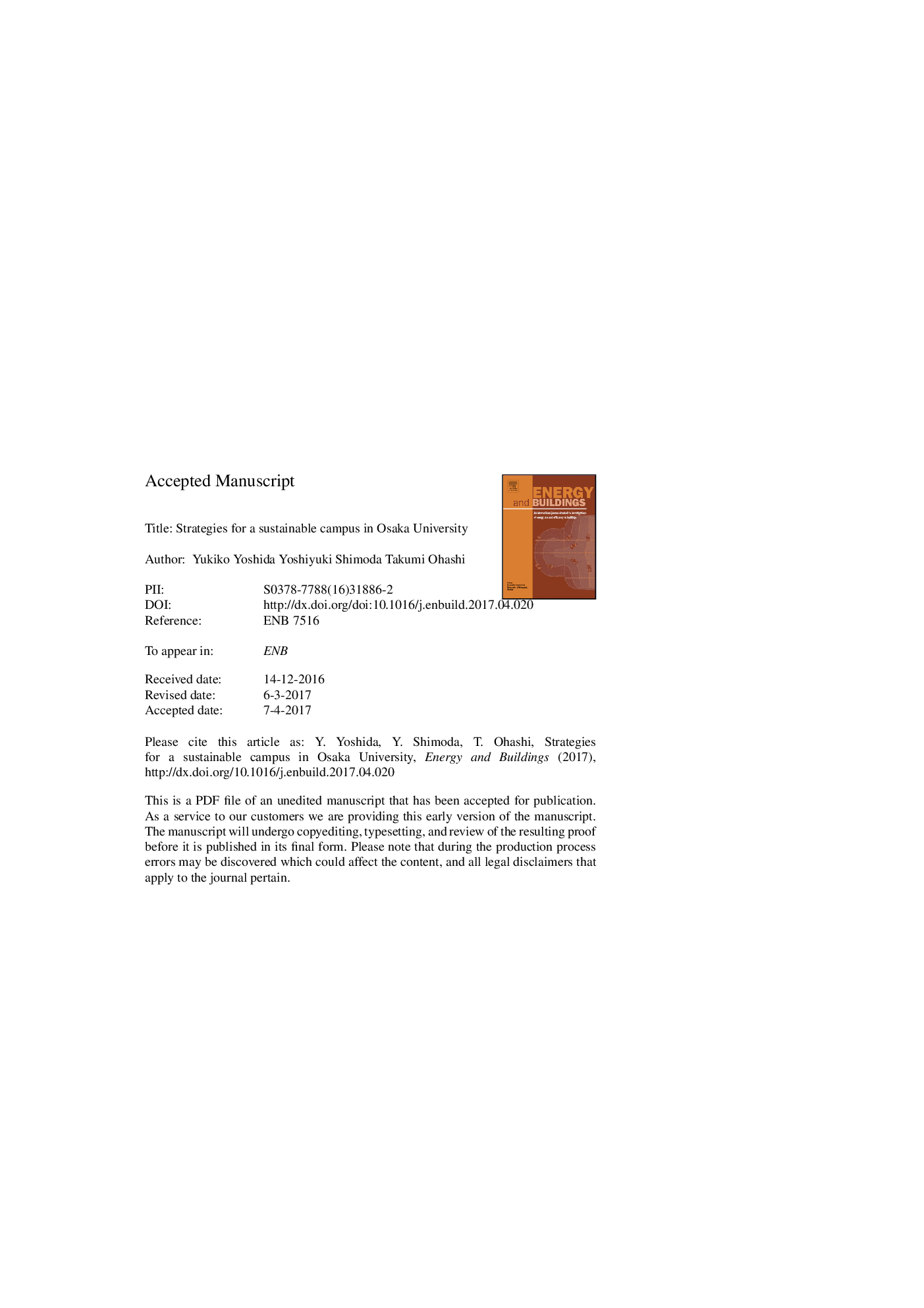| Article ID | Journal | Published Year | Pages | File Type |
|---|---|---|---|---|
| 4919142 | Energy and Buildings | 2017 | 24 Pages |
Abstract
This paper reports strategies toward achieving a sustainable campus at Osaka University, Japan. We advance a daily energy-use schedule for each building type to provide effective energy-saving strategies. We classify the facilities into three categories according to department type to reveal their energy-use patterns and identify their strategies for saving energy. These strategies will contribute to a sustainable campus using photovoltaic generation. Not only the implementation of energy-saving technologies but also the installation of renewable energy technologies will realize a sustainable campus at Osaka University. Category I (liberal arts) buildings have low energy density. The energy efficiency strategy for Category I is to develop zero-energy buildings by tuning the energy system to people's daily routines. Category II (science and engineering) buildings have high energy density. The energy efficiency strategy for Category II is effective energy conservation using the plan-do-check-act cycle. Category III buildings are large-scale facilities with experimental laboratories. The energy efficiency strategy for Category III is outsourcing energy management to an energy service company. Compared with fiscal year 2010, in 2015 Osaka University decreased energy use per unit floor space by 22%. It achieved these savings despite an increase in total floor area during that period.
Related Topics
Physical Sciences and Engineering
Energy
Renewable Energy, Sustainability and the Environment
Authors
Yukiko Yoshida, Yoshiyuki Shimoda, Takumi Ohashi,
